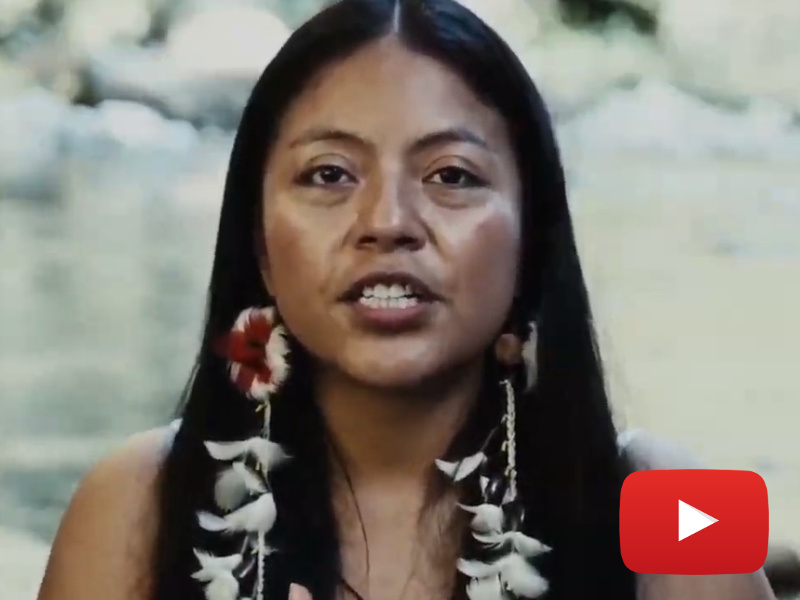The Xingu River needs to pulsate for life to exist. The flood pulse is the source of the life cycle in most Amazonian rivers. The Juruna Yudjá of the Paquiçamba Indigenous Land and the riverside communities of Volta Grande do Xingu have known this for a long time.
To defend the promotion of life, this Thursday, they released the animation #PulsaXingu, which presents the proposal for the Piracemas Hydrogram. This is a proposal based on ecological criteria so that the Belo Monte Hydroelectric Power Plant releases volumes of water that are more suitable for fish reproduction.
Since the dam, in 2015, the people impacted by the plant and the Norte Energia concessionaire have been fighting over water. Belo Monte diverted 70% of the flow of the Xingu River to energy production. This deviation is called Consensus Hydrogram by the entrepreneur, “but there is nothing of consensus”, as the animation states.
With this water flow established by Norte Energia, fish and other aquatic species began to die, one of the real scenes that was illustrated in the film. In 2016, characterized by the Juruna as the “year of the end of the world,” many dead turtles were found in the region in places that were formerly feeding and breeding areas for these animals. Tons of dead fish were also observed.
“Xingu, the river that pulsates within us”
In 2018, the animation was released “Xingu, the river that pulsates within us”, which denounced the impacts of the Belo Monte hydroelectric plant on the river and on the people who live in Volta Grande do Xingu, in Pará. The film, which details the damage caused by the Consensus Hydrogram, was produced by the Socio-Environmental Institute (ISA) in partnership with the Yudjá Miratu Association of Volta Grande do Xingu (Aymix) and the Federal University of Pará (UFPA).
The production won AnimaMundi in 2019, the biggest animation festival in Latin America.
The animation released today features a proposal produced by MATI (Independent Territorial Environmental Monitoring) researchers from Volta Grande do Xingu. Comprised of local scientists and academics, the collective monitors the impacts caused by the Belo Monte operation on a daily basis. Based on this meticulous observation and on analyzes based on participatory methodology, the MATI researchers launch a proposal to revise the operating system of Belo Monte as a condition for protecting life in the region, simulating the flood pulse of the Xingu River: the Hydrogram of Piracemas.
It has piracema in the name because this proposal guarantees the occurrence of some of these migratory reproduction areas for fish that had been destroyed with the water flows currently operated by Norte Energia. This struggle for the right to share water in its multiple uses is what has underpinned MATI’s actions since its inception in 2013, based on the ecosystem knowledge of the region’s traditional peoples.
For those from the city, piracema is a new name. But for those who live by the river, piracema is a common word that everyone knows. The piracema, over there in Volta Grande, is the place where the fish go to spawn and where the alevins (fish fry) develop. They are very special places, pockets that accumulate water in a different way, providing a hidden and peaceful place that took thousands of years to be created by nature.
One of the major impacts of the UHE Belo Monte verified and described by MATI is the interruption of piracemas. The water from the river no longer arrives in these places at the right time or in the right amount to guarantee the reproduction of the fish. Today, in this stretch of the Xingu River, some species only have old individuals, which were there before the installation of the plant.
MATI monitors alluvial forests, fishing dynamics and spawning. In practice, monitors go daily to their monitoring sites and measure the water level using rulers installed on the ground. They also photograph the environment, record the behavior of the fish in the area and observe other phenomena that may be happening there, depending on the amount of water and the time of year. Afterwards, this data is crossed with the water flow data released that day, which is published by Norte Energia on its website, as required by the National Water Agency (ANA).
Seu Sebastião, a MATI researcher and resident of Ilha do Amor in Volta Grande do Xingu, says that when the waters arrive in November, they talk to the fish and say: ‘come, come little fish, come big fish, let’s go to the piracemas’.
Fish know how to hear this call with their bodies and follow the voice of the waters along with its flow that begins to grow. It’s a delicate conversation that took a long time to exist and has existed for a long time. Belo Monte broke this delicate millennial conversation.
The auction that allowed this lasted just seven minutes.
This process of interruption of fish reproduction is illustrated in the animation in two moments. One of them is an illustration of a curimatá with dried roe inside it. This situation – curimatás with dry eggs inside them – has become part of the Juruna’s daily life since 2015. The curimatás do not find enough water in their spawning grounds, which is why they refuse to spawn and the eggs dry inside them.
“Movements need to be synchronized for the fish to enter an area that is being flooded and for the flood to progress gradually. Fish and other living organisms need a response from the environment, a sure, reliable signal that usually manifests itself in a long sequence. Every day the volume of water increases, there is a clear sign. This prevents fish from entering, for example, an area that will suddenly dry out. Or that they spawn, wasting energy accumulated over the course of an entire year. When this comes and goes, motivated by the faucets of Belo Monte, this whole balance is destroyed”, explains professor and ichthyologist Jansen Zuanon.
Roe graveyard
Another tragic episode illustrated in the animation is the roe cemetery, recorded on February 8, 2023. Josiel Juruna, MATI coordinator, and other local residents found hundreds of thousands of curimatã roe rotting in the Odilo spawn.
The day before, heavy rain fell on Volta Grande. As a result, water began to flood this region. The curimatãs migrated to spawn in the flooded area.
An apprehensive, worried expectation took over the group, which returned to the Muratu village. On the 8th, the rain had ceased. And the worst was confirmed: the water from the Xingu, at levels far below historical averages, had not “held” the water in the spawning pool, which had flowed back into the river and emptied the area where the fish had deposited eggs.
In what was once a nursery, the group found the Roe Graveyard.. “It was a catastrophe for us. It was very sad to come across this moment”, said Josiel. “My brother Gilliard, who was also there, and he was the oldest, said he had never seen it happen, nor had my father ever seen it happen”, he says.
Hope: hydrograph of piracemas
The Piracemas Hydrogram, a proposal presented in the animation, defends ecological criteria that are more similar to the natural pulse of the river. In this proposal, resulting from collaborative research, the water flow begins to increase subtly from October, with a more substantial increase in November and a gradual increase until April, when it begins to decrease.
This flow is the right time for the piracemas to gradually fill up, so that the fish can once again understand the signs of nature, spawning and ensuring their reproduction.
This detailed proposal, based on thorough scientific research, was presented to Ibama, the licensing body that must define the new hydrograph before renewing the UHE Belo Monte operating license, which expired in 2021.
The body’s president, Rodrigo Agostinho, said that the proposal is being analyzed in seminar organized by the Attorney General’s Office in March. On a later occasion, he stated that any approved proposal will have to guarantee the conditions for maintaining and promoting life in the region.
“The guarantee I can give is that, with this Consensus Hydrograph (A and B hydrographs operated by Norte Energia), you forget about the license. Our priority is life in the Xingu,” he said.
In one of the animation scenes, the zebra (Hypancistrus zebra) appears. Zebrinha is a very beautiful ornamental fish, very small, endemic to Volta Grande do Xingu. It has this nickname because its stripes resemble those of a zebra. This fish only exists there.
Chief Gilliarde Juruna makes a connection between the zebrinha and the Juruna Yudjá people. “We, the Juruna people of Volta Grande, are like the Zebra. We are threatened with extinction by the impacts of Belo Monte, which threaten our lives, in the present, future and past. And because we need to tell this story to the world. Because, like Zebra, we also only exist, we leave, we are the Volta Grande do Xingu”
The Piracemas Hydrogram is this possibility of resuming the existence of the entire life of the Volta Grande do Xingu. This includes the fry, which will be able to hatch and grow in the piracemas, the curimatãs, which will be able to spawn, the tracajás, which will feed and spawn, and the zebras, which will grow and reproduce.
Ribeirinhos and the Juruna Yudjá people of Volta Grande do Xingu, who share a long history with the flow of the Xingu waters, will be able to maintain their way of life. To understand this story, we need to board the wooden canoes of the people of the region, people who have canoes for feet.













